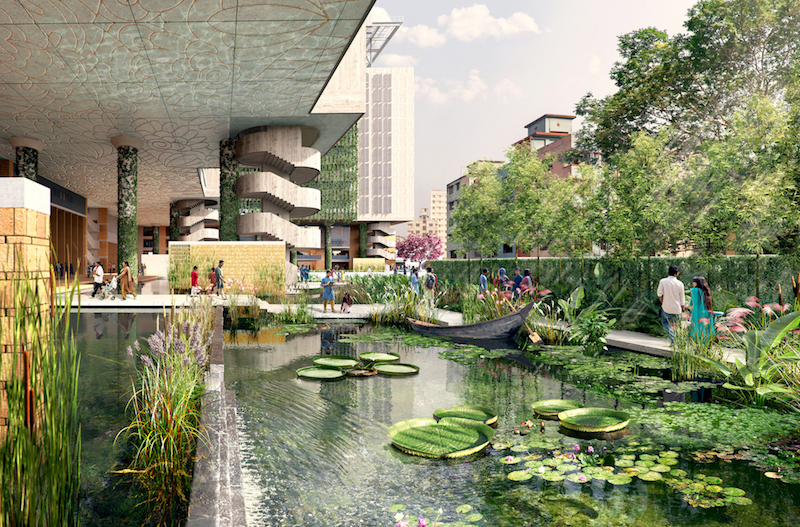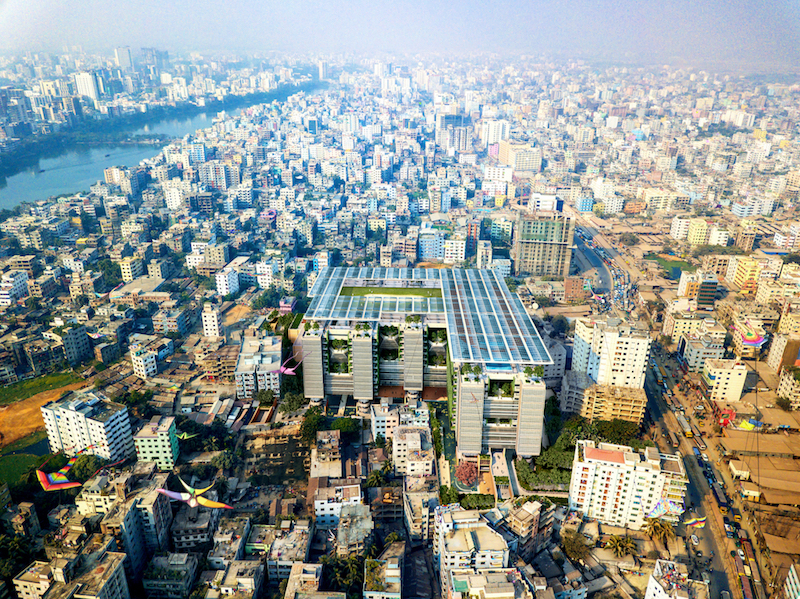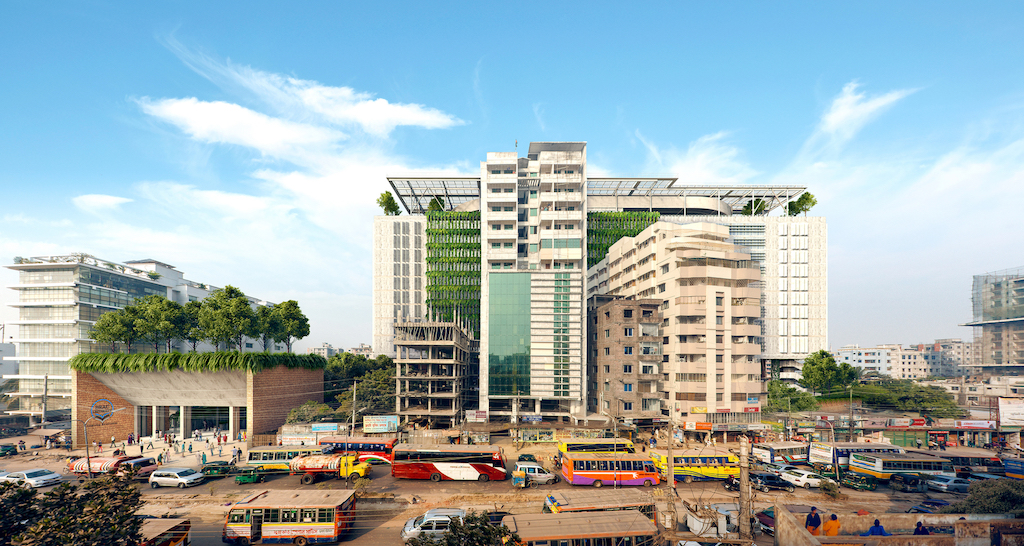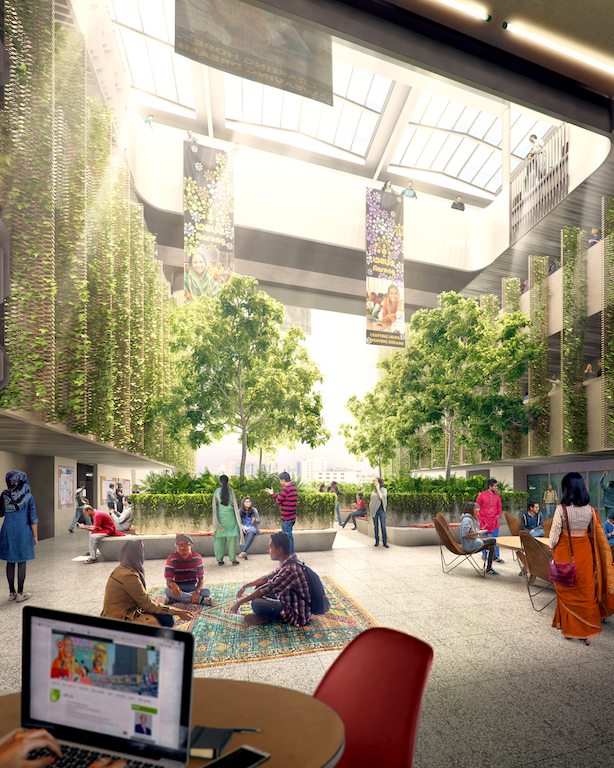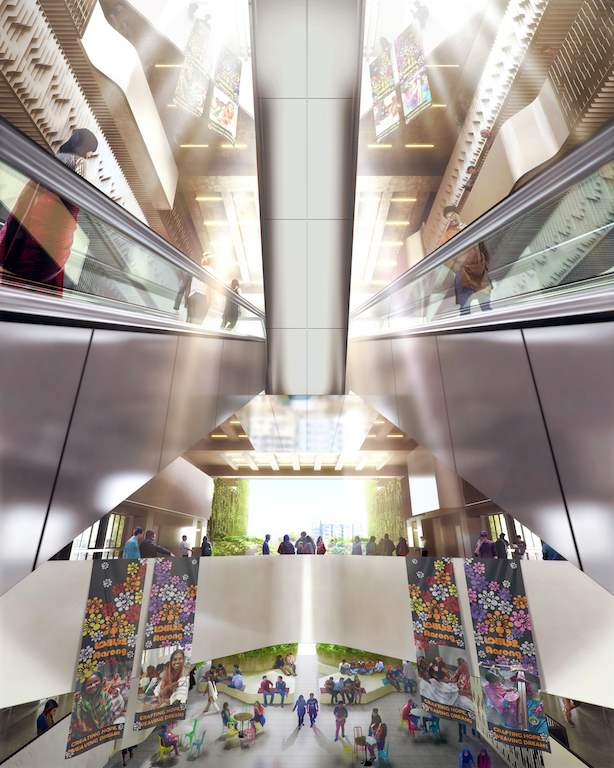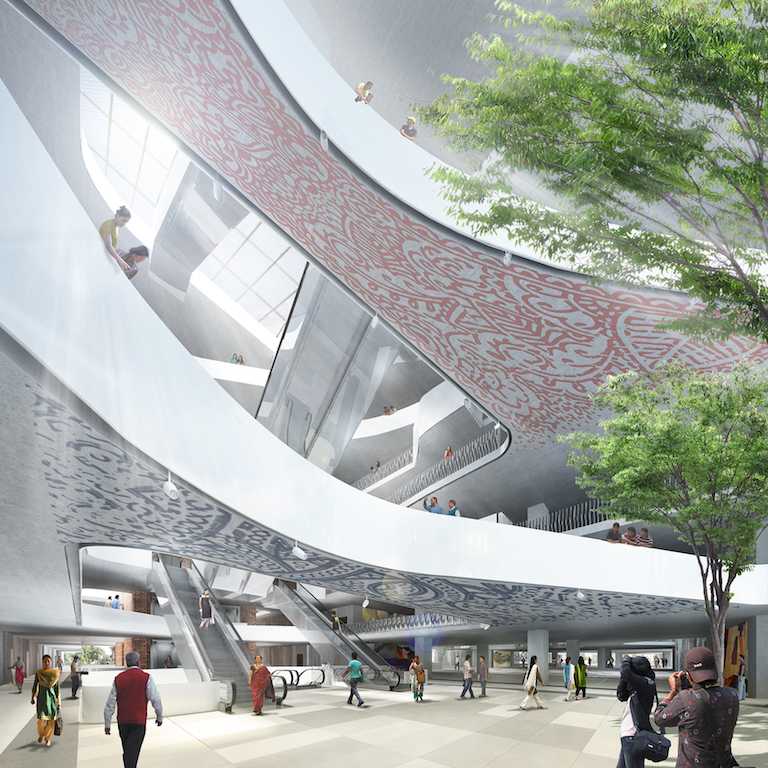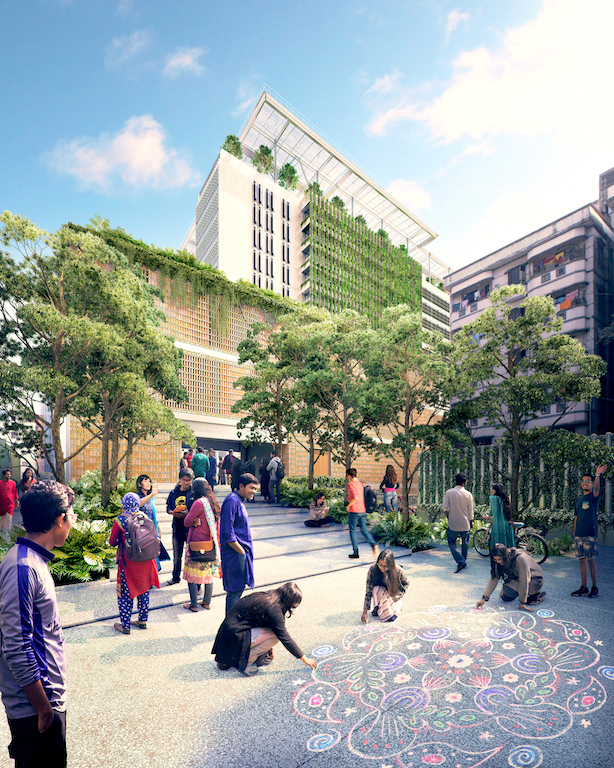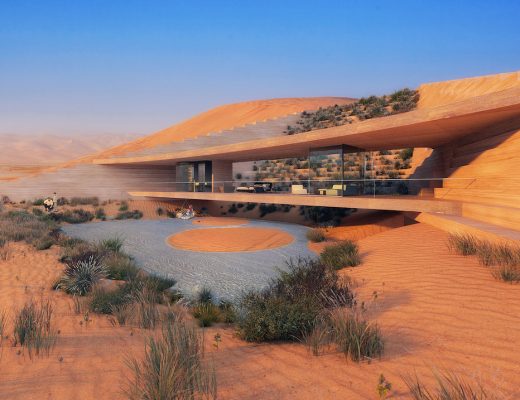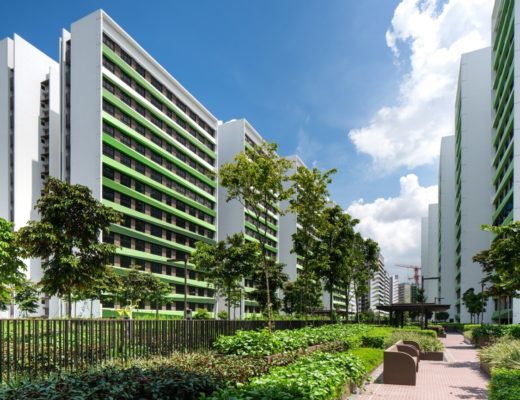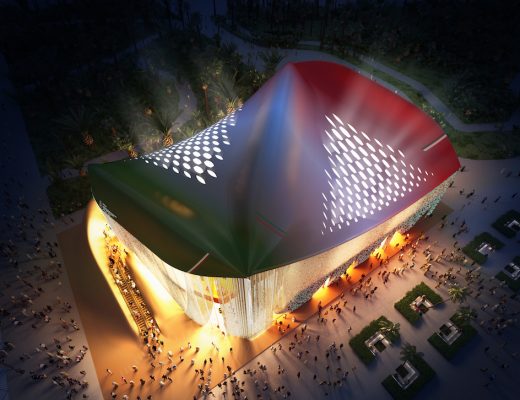Singapore-based practice Woha and Brac University have revealed more images of the 5.3-acre university campus, which is expected to be completed by 2021. Located in Dhaka, Bangladesh, the project is located on a wasteland which will be transformed into a sustainable inner-city campus and public park.
Under construction since 2017, the 88,258m² campus will incorporate the values of BRAC, the largest non-governmental organisation (NGO) in the world. Transforming a residual area into a liveable, tropical, and sustainable campus, the project draws inspiration “from the region’s Sundarbans forest, which have separate ecosystems above and below tidal level”. The project has biophilic elements, a mainstay of Woha’s practice and seen in its projects throughout, combined with traditional Bangladeshi elements such as the use of bricks that references local vernacular architecture.
The design and the functions are divided into two bodies: The 13-storey private academia raised canopy for learning and the ground-level public campus park created by remediating the existing polluted swamp into a bio-retention pond with lush native landscaping. The campus that will house over 10,000 students, and will have its academia building shelter the campus park from the sun and the monsoon rains.
The public part will also include a gathering space for the university’s auditorium, multi-purpose hall, and public gallery. The roof, serving as the university green will accommodate a recreational field, a swimming pool and a 200m running track under the shade of a large photovoltaic (PV) solar canopy. With a flexible structural model, spaces can be combined or subdivided, allowing for future resizing of the faculties.
“We were inspired by BRAC University’s mission to foster the development process of Bangladesh by creating an opportunity for excellence in higher education that is responsive to the local communities’ needs. The new campus will provide an environment that is conducive to learning and human interaction and its integrated landscaping will enhance urban biodiversity. Where there used to be a flooded wasteland, the design of the new building implements strategies that help to reduce waste as well as save energy and water.” – Richard Hassell, co-founder, Woha
The new architectural and environmental strategies incorporated in the design will create “tropical learning spaces that do not require full air conditioning, while a matrix of sun-shading fins and vertical green walls address solar heat gain”. The green facades act as environmental filters that cut out glare and dust, help keep rooms cool, and dampen traffic noise. Open and airy, the floor plans facilitate cross ventilation and daylight in every classroom.
You might also like:
Woha brings green, sustainable architecture to Taichung with its first Taiwan project

